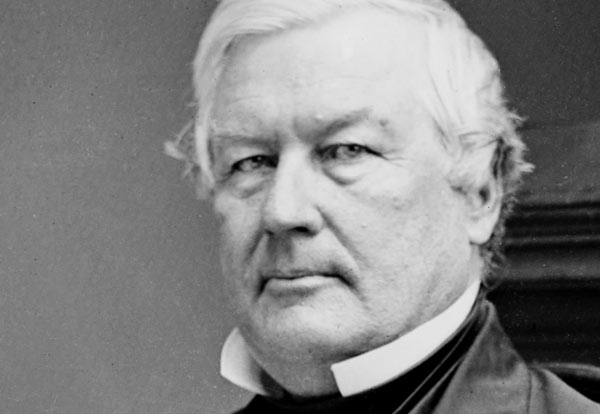Millard Fillmore |
|||||
 |
|||||
Millard Fillmore was born on January 7, 1800, in Cayuga County, New York. He had eight brothers and sisters. As a teenager, Fillmore served as an apprentice to a cloth maker but received little formal education apart from briefly attending New Hope Academy in New Hope, New York. In 1819, he began to clerk for Judge Walter Wood in Montville, New York, whom he studied law under. In 1823, he was admitted to the New York bar and started practicing in East Aurora, New York (near Buffalo). In 1826, he married Abigail Powers. The couple would have two children. Fillmore’s law career moved quickly. In 1836, he formed the practice Fillmore, Hall & Haven, which would become one of western New York’s most successful firms. In 1846, Fillmore founded the University of Buffalo, which today is the largest university in the State University of New York (SUNY) system. From 1832 to 1843, Fillmore served in the New York State Assembly as a Whig. From 1848 to 1849, he served as New York State Comptroller. In 1849, Fillmore was selected as Whig presidential candidate Zachary Taylor’s running mate. Even though Fillmore was relatively unknown, he was selected by Whig officials because it was thought he would help them win the vote in New York and block New Yorker Thurlow Weed from receiving the nomination. In 1850, President Zachary Taylor died unexpectedly, and Fillmore was sworn in as the 13th president. He would be the last Whig president and the first president to have been born after the death of George Washington. Fillmore’s presidency was dominated by dissention in the Whig Party and by the growing division over the question of the extension of slavery into new states. In what came to be known as the Compromise of 1850, California was admitted to the Union as a free state, the New Mexico Territory was established, and the Fugitive Slave Law was enforced in the Northern states, enraging some Northern members of the Whig Party. As the dissention over the slavery issue caused the disintegration of the Whig Party, Fillmore joined the Know-Nothing Party, an anti-Catholic, anti-immigrant party that believed America was being overrun by immigration. Like the Whigs, the Know-Nothing Party soon disintegrated and Fillmore’s political career ended. In 1862, he founded the Buffalo Historical Society and became its first president. Fillmore died on March 8, 1874, of a stroke. |
|||||
Full Presidential Biographies |
|||||
| Click a president to learn more! | |||||
 |
 |
 |
 |
 |
 |
 |
 |
 |
 |
 |
 |
 |
 |
 |
 |
 |
 |
 |
 |
 |
 |
 |
 |
 |
 |
 |
 |
 |
 |
 |
 |
 |
 |
 |
 |
 |
 |
 |
 |
 |
 |
 |
 |
||||